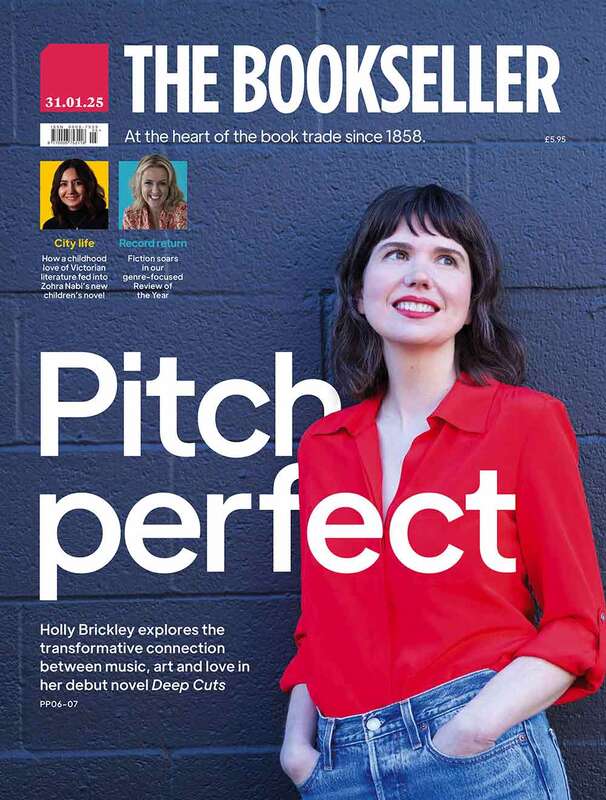You are viewing your 1 free article this month. Login to read more articles.
Picture power
Far too many times, I’ve been in a bookshop or a school and heard adults persuade a child away from a picture book and encouraged them to read ‘something more appropriate’. There’s a huge notion in this country that picture books are for younger children and a step into ‘proper reading’.
Far too many times, I’ve been in a bookshop or a school and heard adults persuade a child away from a picture book and encouraged them to read ‘something more appropriate’. There’s a huge notion in this country that picture books are for younger children and a step into ‘proper reading’.
This comes from the very top. In 2016, the DFE published a series of videos for teachers. These were designed to show what reading ‘at the expected level’ looks like for 11-year olds leaving primary. Of the seven videos available, six focus on novels, the remaining video shares a short story. None of the videos share a child reading a picture book, graphic novel, comic or highly illustrated text. In 2018 further videos were produced, exemplifying what reading at ‘greater depth’ looked like for 7-year-olds. These all showed children moving on from picture books, to Dahl, Kipling and Harry Potter and the Goblet of Fire.
With this in mind, we need to question what it means for a child to be a ‘good reader’. Is it about the volume of words they can read? The length of the text? Or is it about being able to gain meaning from a wide variety of texts, reading for pleasure, purpose and being able to engage critically with the world around them?
In a world that relies increasingly on visual means of communication, it’s vital that children of all ages are able to use a wide variety of reading skills and strategies to construct meaning from a combination of words and images. The texts that children encounter throughout their school experience and the reading approaches used should equip them with the skills necessary to be visually and critically literate and to navigate such a world successfully.
Six years ago, I was lucky enough to meet children’s author and illustrator Ed Vere. We quickly realised our shared recognition of the importance and value of visual literacy for children; understanding the meaning that is held and being able to create meaning in illustrations and images.
We started to talk about what this would look like if we could put it into a training programme for teachers and from this conversation came The Power of Pictures. The programme is designed to help teachers use picture books, understand the value of illustration to communicate and shape ideas for writing and to develop meaningful relationships between authors and schools. Over the last six years, we’ve involved ten other authors including, Benji Davies, Alexis Deacon, Mini Grey, Chris Haughton, Tim Hopgood, and Viviane Schwarz.
Over the course days, the author and I train the teachers in visual literacy and show them how to analyse the messages communicated in texts and images in picture books, in ways that they can easily replicate in the classroom. The partnership between educator and artist is the key - the illustrator is able to show how they create meaning in their illustration, talking about specific techniques like how they decide on layout, composition, colour palette and perspective. I am able to relate this back to the classroom curriculum and show how this supports reading and writing development, giving teachers confidence to try out ideas and look at the impact on children.
The results have been remarkable, but we’ve seen the most impact on older children. The programme was recently evaluated as part of the Education Endowment Foundation and Royal Society of Arts Learning About Culture trial. The evaluation focussed on the impact on Year 5 teachers and children (9-and 10-year-olds) and found that the visual element of this programme particularly attracted learners who traditionally have difficulties engaging in literacy activities. Teachers noted the high levels of engagement with a picture book and the depth of discussion children had around them.
Simon Smith, headteacher at East Whitby Primary Academy, one of the schools involved in the trial observed: “The developing understanding of how picture books work and how illustrators actively make decisions has led to children digging much more deeply into the story. The increasing understanding that the illustrator is an author has led to in-depth discussions around authorial intent. Pupils increased confidence in expressing understanding and a willingness to challenge ideas has impacted in ways we did not imagine. They have an increasing vocabulary and language to share their ideas.”
What’s more, children’s reading also had impact on their writing. The complete and easily accessible narratives in picture books gave them a real understanding of story structure and incorporating illustration into the writing process supported their writing self-efficacy and writing creativity.
What we must all understand is that picture books are an important part of the reading experience for children of all ages, and should be valued rather than being seen as a step on the journey towards novels. As Ed himself understands, "Good illustration contains deep levels of sophisticated meaning and emotional engagement for children of all ages. We must be more ambitious and finally realise that illustrated books perform brilliantly for older children."
Find out more about the Power of Pictures on CLPE’s website.
Charlotte Hacking is Learning and Programmes Director at CLPE. She is an experienced teacher and senior leader who has taught across the primary school age range. She developed and leads the CLPE’s ground breaking Power of Pictures research, investigating the impact visual literacy and illustration can have on children’s reading and writing. Charlotte also led and developed the CLPE’s Power of Poetry research project, and is a judge for the CLPE poetry award, CLiPPA. She tweets at @charliehacking.





